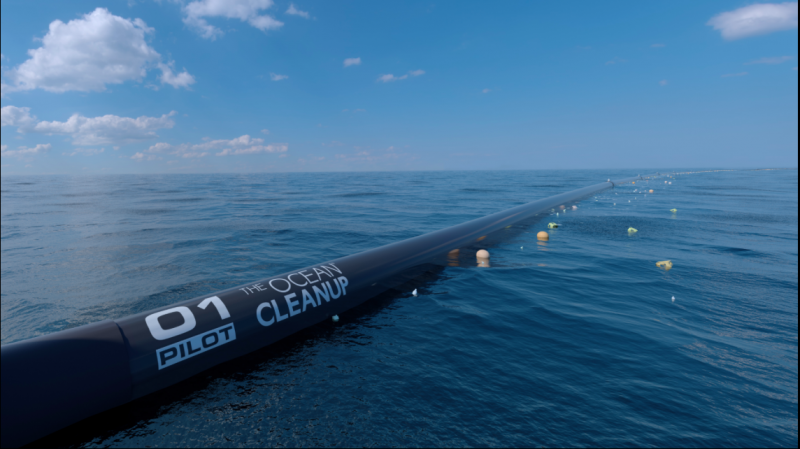How a College Dropout Plans to Rid the Oceans of Plastic
Published on by Marina Vasiljevic, Sole proprietor of consulting agency M ENGINEERING ZONE in Social
A 22-year old college dropout wants to clean the oceans.

Erwin Swart / The Ocean Cleanup
Imagine a garbage truck stuffed to the brim with plastic. Now imagine that truck driving to an ocean coastline and emptying its entire load into the water. Imagine that happened every minute of every single day.
That’s essentially what’s happening throughout the world. Each year, 8 million to 13 million tons of plastic make it into the world’s oceans.
And now a 22-year old college dropout wants to clean it all up.
“I believe the Great Pacific Garbage Patch can completely clean itself in just five years,” then 18-year old Boyan Slat declared in a shaky 2012 Ted Talk that catapulted him to international fame.
Since then, Slat, who is now 22, dropped out of college and raised $31.5 million for his ambitious The Ocean Cleanup project, a mission that has been both admired and scoffed at by scientists and environmental activists.
Slat’s admirers include Silicon Valley investors and the UN, which made Slat the youngest recipient of its highest environmental award, “Champion of the Earth.”
“Boyan Slat is inspiring people, organizations and governments to find solutions to the escalating threat of plastic debris in our oceans,” Achim Steiner, the former Under-Secretary General of the UN, said at the time.
Detractors include prominent oceanographers who say Slat’s project isn’t based in good science.
“Focusing clean-up at those gyres, in the opinion of most of the scientific community, is a waste of effort,” marine biologist Jan van Franeker of Wageningen Marine Research in the Netherlands told Science Mag.
To most scientists, including Franeker, the focus should be on preventing plastic from entering the oceans in the first place and cleaning up debris closer to shore.
What’s undeniable, as the UN points out, is the influence of Slat’s message. Through his pipedream project, he’s brought much-needed attention to the problem of plastic pollution in the world’s oceans.
And, in the end, his grand plan might just work.
What Slat’s Proposing
Slat first became aware of plastic pollution at 16 when he was diving in Greece and saw more plastic bags than fish. He then dedicated a school science project to figuring out how to tackle the problem. While testing out contraptions in the water, he realized that plastic could be collected in a cost-effective manner by using the ocean’s currents.
A few years later, he conceived a prototype — a solar-powered floating structure with 100 kilometer v-shaped arms shackled to the seafloor. The arms corral plastic to a central location where boats can periodically clear the waste.
He also realized that gyres, areas where currents collide and form circular movements of water, would be the perfect place to situate the structure. In particular, he focused on a mammoth accumulation of plastic known as the Great Pacific Garbage Patch.
Theoretically, the structure would be able to indefinitely collect plastic in this fashion, ultimately clearing plastic accumulations like the Great Pacific Garbage Patch. It could also become profitable by selling the waste to recyclers and selling branded material.
Read More: Here Are All the Adidas Products Made From Ocean Plastic
Once a business plan was sketched, Slat started The Ocean Cleanup, an organization dedicated to cleaning up the Great Pacific Garbage Patch.
Last year, his team deployed their first pilot, a 100 meter structure in the North Sea in 2016.
After two months, it began to fall apart.
The team of engineers set about creating a new, more resilient design, shrinking the structure’s arms from 100 km to 1 km and changing the base so that it will sit only a few hundred meters from the surface of the water where it will be less vulnerable to violent weather.
The smaller design allows the team to hit the market in 2018, rather than the projected goal of 2020. They hope to launch 50 structures that cost a few million dollars each. Within five years, they aim to clean half of the patch.
Read more: Global Citizen
Media
Taxonomy
- Public Health
- Environment
- Natural Resources Conservation
- Public Awareness